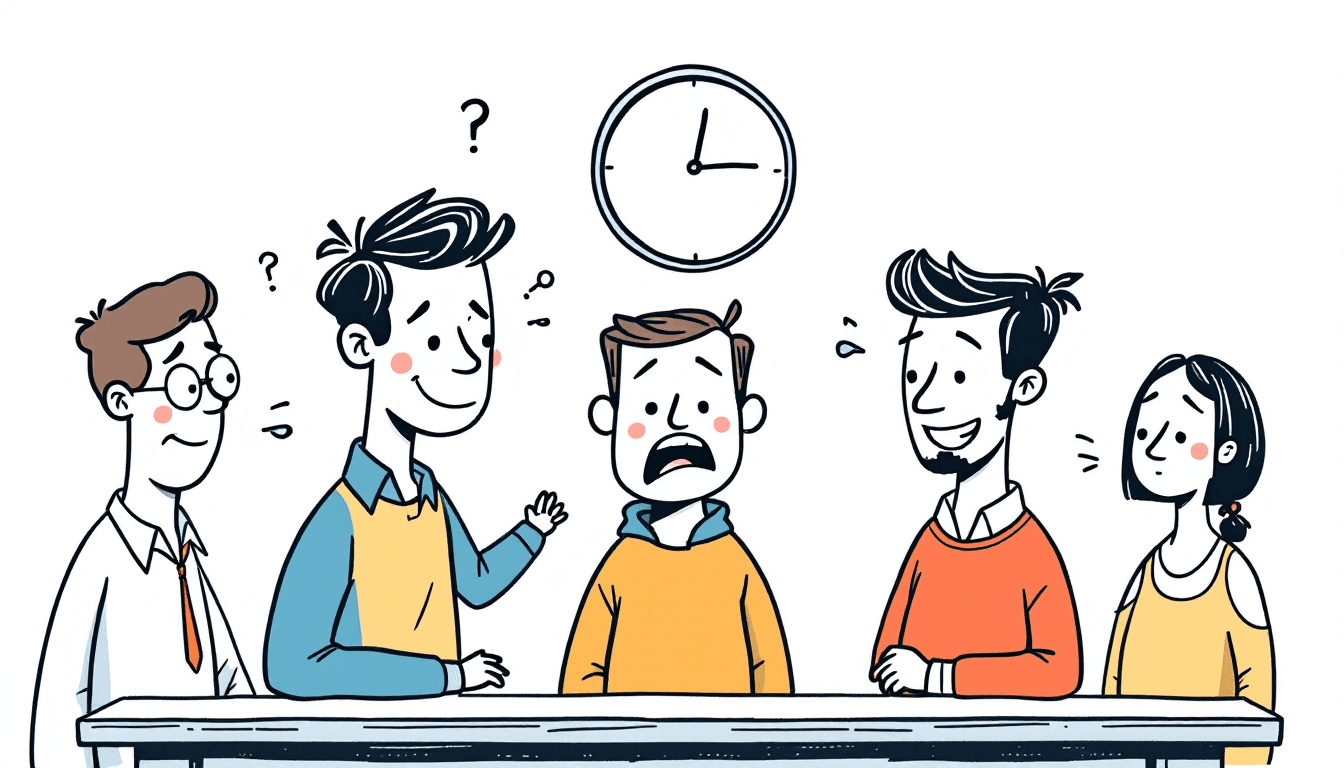After running 500+ standups and testing every format, I perfected the 7-minute agenda that teams actually love. Copy this exact template to cut meeting time in half while doubling productivity.

Quick Answer: The 7-Minute Formula
The winning format: 1 minute check-in, 4 minutes rapid updates (90 seconds max per person), 2 minutes blockers and next steps. No status reports, no detailed discussions, just focused forward momentum.
Why Most Standups Fail
Before showing you what works, here is why 80% of daily standups suck:
- They become status report sessions instead of planning meetings
- People ramble about yesterday instead of focusing on today
- No time limit creates 20-30 minute marathons
- Blockers get discussed instead of just identified
- No clear outcomes or next steps
The 7-Minute Standup Template
Minute 1: Energy Check-In
Start with a quick energy check using numbers 1-10. Everyone shares their energy level for the day. This takes 30 seconds and gives you instant team mood insight.
Script: Good morning team. Energy check - rate yourself 1 to 10. I will go first: 8 today, caffeinated and ready. Quick round.
Minutes 2-5: Rapid Updates (90 seconds each)
Each person gets exactly 90 seconds to cover: 1) Priority focus today, 2) One key win from yesterday, 3) Any blockers. That is it. No details, no stories.
The formula: Today I am focusing on [ONE THING]. Yesterday I completed [SPECIFIC WIN]. My blocker is [SPECIFIC ISSUE] or No blockers.
Example: Today I am focusing on the user dashboard design. Yesterday I completed the wireframes review with stakeholders. No blockers.
Minutes 6-7: Blockers and Coordination
Address any blockers mentioned. Do not solve them in the meeting. Identify who will help and when they will connect offline.
Script: For blockers mentioned, let us get offline connections set up. [Name], can you and [Name] sync on [issue] by [time]? Everyone else, any quick coordination needed for today?
The 90-Second Rule That Changes Everything
The magic is the 90-second hard limit per person. Here is how to enforce it without being rude:
- Set a visible timer that everyone can see
- Give a friendly 30-second warning hand signal
- Use the phrase Thanks, let us take details offline when time is up
- Model the behavior yourself by staying under 90 seconds
Scripts for Common Situations
When Someone Goes Over Time
Thanks [Name], that sounds important. Can you grab [relevant person] after this meeting to dive deeper? Next person.
When Someone Has No Update
Perfect, continuing where you left off yesterday. Next.
When Discussion Starts
Great question. Let us park that for a 5-minute discussion right after standup with [specific people]. Moving on.
When Someone Shares Irrelevant Information
Interesting. For standup, let us focus on your main priority today and any blockers. What is your one focus?
Week-by-Week Implementation Guide
Week 1: Introduce the Format
Explain the new format and why you are changing. Share this agenda with the team before the first meeting. Focus on getting used to the 90-second rhythm.
Week 2: Enforce Time Limits
Start using the timer and gentle redirects. People will test the boundaries. Stay consistent and friendly but firm.
Week 3: Refine the Process
Ask for feedback and adjust. Some teams need slightly different formats based on their work style.
Week 4: Lock in the Habit
By week 4, the format should feel natural. Teams usually report feeling more focused and energized.
Advanced Techniques for Different Team Sizes
Small Teams (3-4 people)
Can extend to 2 minutes per person. Use this for more detailed planning coordination.
Medium Teams (5-7 people)
Perfect for the 90-second format. Consider rotating who goes first to keep energy fresh.
Large Teams (8+ people)
Reduce to 60 seconds per person or split into smaller sub-team standups. Anything over 10 people needs restructuring.
What to Do After Standup
The magic happens in the 5-10 minutes immediately after standup:
- Blocker resolution conversations happen
- Quick coordination discussions occur
- People can ask detailed questions
- Impromptu pair programming sessions start
Most people leave, but those who need to collaborate stick around. This prevents the standup from becoming a discussion forum.